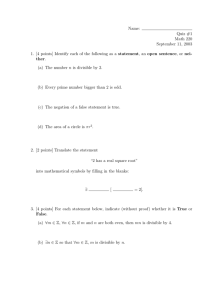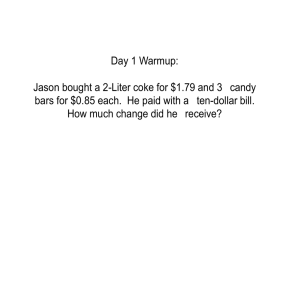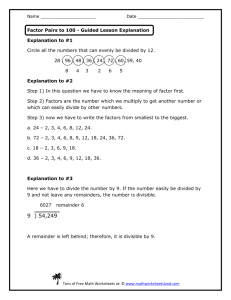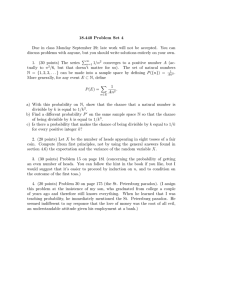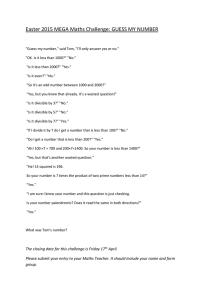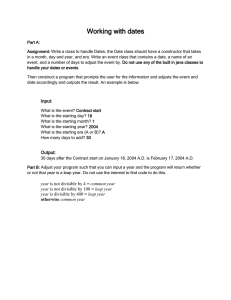Midterm 1, Math 3210 September 16, 2015
advertisement
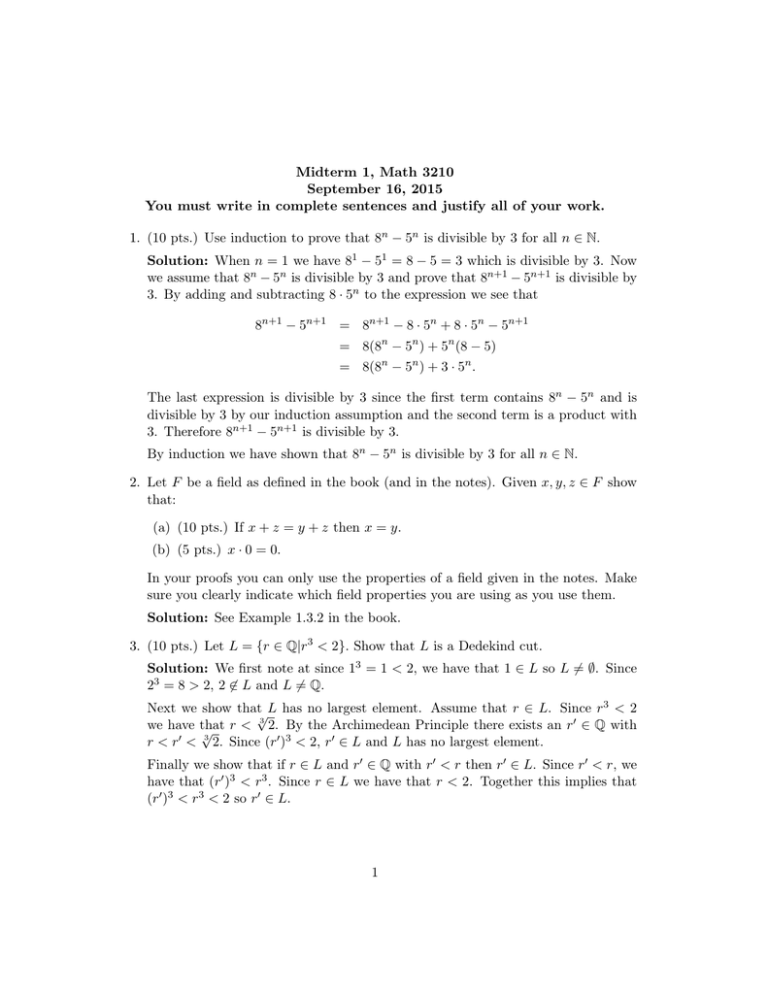
Midterm 1, Math 3210
September 16, 2015
You must write in complete sentences and justify all of your work.
1. (10 pts.) Use induction to prove that 8n − 5n is divisible by 3 for all n ∈ N.
Solution: When n = 1 we have 81 − 51 = 8 − 5 = 3 which is divisible by 3. Now
we assume that 8n − 5n is divisible by 3 and prove that 8n+1 − 5n+1 is divisible by
3. By adding and subtracting 8 · 5n to the expression we see that
8n+1 − 5n+1 = 8n+1 − 8 · 5n + 8 · 5n − 5n+1
= 8(8n − 5n ) + 5n (8 − 5)
= 8(8n − 5n ) + 3 · 5n .
The last expression is divisible by 3 since the first term contains 8n − 5n and is
divisible by 3 by our induction assumption and the second term is a product with
3. Therefore 8n+1 − 5n+1 is divisible by 3.
By induction we have shown that 8n − 5n is divisible by 3 for all n ∈ N.
2. Let F be a field as defined in the book (and in the notes). Given x, y, z ∈ F show
that:
(a) (10 pts.) If x + z = y + z then x = y.
(b) (5 pts.) x · 0 = 0.
In your proofs you can only use the properties of a field given in the notes. Make
sure you clearly indicate which field properties you are using as you use them.
Solution: See Example 1.3.2 in the book.
3. (10 pts.) Let L = {r ∈ Q|r3 < 2}. Show that L is a Dedekind cut.
Solution: We first note at since 13 = 1 < 2, we have that 1 ∈ L so L 6= ∅. Since
23 = 8 > 2, 2 6∈ L and L 6= Q.
Next we show that√L has no largest element. Assume that r ∈ L. Since r3 < 2
we have that
r < 3 2. By the Archimedean Principle there exists an r0 ∈ Q with
√
3
0
r < r < 2. Since (r0 )3 < 2, r0 ∈ L and L has no largest element.
Finally we show that if r ∈ L and r0 ∈ Q with r0 < r then r0 ∈ L. Since r0 < r, we
have that (r0 )3 < r3 . Since r ∈ L we have that r < 2. Together this implies that
(r0 )3 < r3 < 2 so r0 ∈ L.
1
